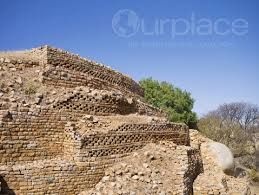
Khami Ruins
Khami Ruins National Monument is found to the west of the Khami River, 22 km from the City of Bulawayo. The property, placed on a 1300 m peak downstream from a dam fabricated amid 1928-1929, spreads a range of around 108 ha, spread over a separation of around 2 km from the Passage Ruin to the North Ruin.
The property was the capital of the Torwa line, which emerged from the breakdown of the Great Zimbabwe Kingdom between 1450 -1650 and was relinquished amid the Ndebele invasions of the nineteenth century. It is made out of a complex arrangement of stages of dry-stone walled structures, copying a later improvement of Stone Age society. The boss' habitation (Mambo) was spotted towards the north on the Hill Ruin site with its contiguous development patios. The populace existed in daga hovels of cobwork, encompassed by an arrangement of stone dividers. These structures show an exclusive requirement of workmanship, an extraordinary number of thin paths and perambulatory displays and noteworthy chevron and checkered divider beautifications. Khami fits in with Great Zimbabwe in various archeological and building angles yet it has notable peculiarities specific to itself and its successors, for example, Danangombe and Zinjanja. Revetments or holding dividers discovered statement without precedent for the design history of the sub-district at Khami, and with it were fancy enhancements; it still has the longest enlivened divider in the whole sub-area.
The building design of the site and the archeological curios give proof to an outstanding understanding of solid, united, early developments. They additionally offer data on the property's mind boggling financial, religious and profound importance for the neighborhood groups and for the general sequential improvement of Zimbabwe custom; launched in Mapungubwe (South Africa), reaching out to Great Zimbabwe, and through the rise of later states. The archeological remains are additionally a demonstration of long-separation noteworthy exchange joins with the Portuguese, and the more extensive world, the assorted scope of transported in antiquities give confirmation of fifteenth and seventeenth century Spanish porcelain, Rhineland stoneware and Ming porcelain, a considerable lot of which are on showcase in the Museum of Natural History in Bulawayo. There is additionally a great stone cross which outlines the contact with preachers at a customarily loved and holy profound site.



